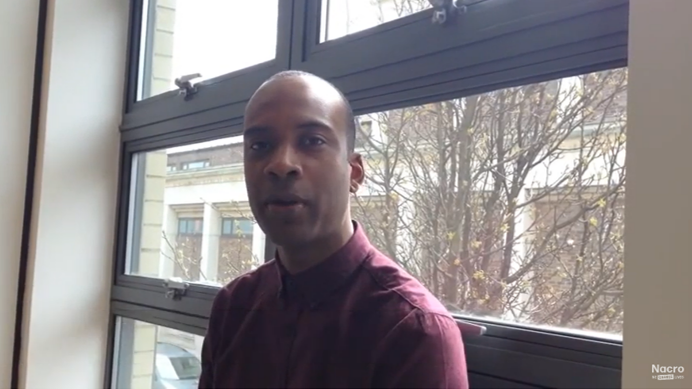An assessment of the applicant’s skills, qualifications, experience and conviction circumstances should be weighed up against the risk assessment criteria for the job. To determine whether a criminal record is relevant, the information should be assessed in relation to the tasks which need to be performed and the circumstances in which the work is to be carried out. You might like to consider the following when deciding whether the offence is relevant to the post applied for:
- Does the post involve one-to-one contact with children or other vulnerable groups as employees, customers or clients?
- What level of supervision will the post-holder receive? Is it unsupervised? Does it involve working in isolation?
- Does the post involve any direct responsibility for finance or items of value?
- Does the post involve direct regular contact with the public?
- Will the nature of the job present any opportunities for the post-holder to reoffend in the course of work?
- Are there any safeguards which can be put in place to minimise any potential risks?
If a shortlisted applicant who meets the requirements of the person specification discloses a criminal record that is not related directly to the post, you should conduct a risk assessment which includes meeting with the applicant to discuss the relevance of their criminal record. On the basis of the information provided, you should take into account the following:
Nature of offence(s)
What type of offence or offences did the individual commit? i.e. theft, fraud, violence, possession of drugs, supply of drugs, sexual offences, public order or other offences. Did the offender commit one type of offence or a range of different offences?
Relevance
You should consider whether the offence is relevant to the position in question. The relevant categories of offences in relation to the protection of children are generally considered to be serious, violent, sexual and drug-related offences, although the nature of the offence is not the only factor that ought to be considered. For example, a person with a previous history of drug-related convictions who has clearly moved on from that period may be particularly well-suited to support others with substance misuse problems. They should not be discounted simply on the basis that they have drug-related convictions.
For work with vulnerable adults, the relevant categories are generally considered to be violent and sexual offences. Offences of dishonesty such as fraud may be relevant if the nature of the post involves unsupervised access to money and valuables. However, even here, one should distinguish between offences. An offence of shoplifting, for instance, might not be a particular cause for concern, though an offence of theft from an individual very likely would be. Beyond these, there are a wide variety of offences that have little relevance, such as public order offences.
Drink-driving offences are not generally considered relevant unless the job itself involves driving e.g. taxi driver or a bus driver.
Seriousness
You should consider the seriousness of any offence or allegations disclosed. This is important because all offence categories cover a very wide range of offences that vary in terms of seriousness. A sexual offence, for instance, covers everything from young men sleeping with their underage girlfriends to indecent assault and rape. Violence covers everything from slaps and smacks, normally recorded as battery or common assault, to grievous bodily harm and murder. Drug offences cover everything from possession of small amounts of cannabis for personal use to possession of class A drugs with intent to supply. Burglary covers everything from taking goods from shop storerooms to entering the homes of elderly people, leaving them in fear. Arson ranges from setting fire to litter bins to destroying property and endangering lives.
The name of the offence (the offence code) can often make the incident sound more serious than it was; which is why it is extremely important to gain further details of what actually took place and to consider the other factors listed here.
Offence circumstances
Who was involved? What happened? Where did it happen? When did it happen? How did it happen? Why did it happen?
You should consider the circumstances and the explanation offered by the applicant. Consider whether there were any aggravating or mitigating circumstances. What was the applicant’s attitude to their offending? Did they show any remorse or take responsibility for their actions? Did they try to make reparation to any victim?
In particular, take into account the applicant’s own circumstances at the time of the offending behaviour including issues with accommodation, education, employment, management of finances and income, lifestyle and associates, relationships, drugs and alcohol, emotional well-being or health.
An explanation of the circumstances surrounding an offence will often be plausible and reassuring. For instance, the person who explains that, in fear and panic, they ended up assaulting someone who was threatening them during a bar fight, may not be as culpable as an individual who caused serious injury with intent during an armed robbery. It is important to bear in mind that only a small minority of offences take place in a work setting. You should also consider that a person convicted of a serious offence may have completely changed their life around for the better.
It is important to be aware that it is incredibly difficult for an applicant seeking to show themselves in the best possible light to a prospective employer, to have to then discuss past matters that they may feel ashamed or embarrassed about. Taking that into account, you should look for openness and honesty, rather than denial and minimisation. You should consider the applicants’ insight into their own behaviour, any indication of changed thinking, relevant changes in their circumstances and, where relevant, victim empathy rather than victim blame or shared responsibility.
Age of offences
Employers should consider the length of time that has passed since the offence that has been disclosed took place. Cautions or convictions that appear on a disclosure certificate may be very old, for example, dating back to when the person was growing up. They may not be relevant in many instances because applicants have put their past behind them.
The government recognises that people can and do put their offending behind them. This recognition is embodied in the Rehabilitation of Offenders Act 1974 (ROA) and by the introduction of the filtering system for positions subject to standard or enhanced disclosure checks. Reoffending statistics in the UK indicate that if individuals go a little more than two years without reoffending, they are no more likely to offend than those who have never offended.
Pattern of offending
Employers should consider whether the applicant committed a single offence, or whether there has been a pattern of offending behaviour or allegations. Is there a big gap between offences, or are there a number of offences within a short period? People who have a pattern of offending right up to the present date may not have put their offending behind them.
Those people with gambling, drink or drug-related convictions, in particular, may remain a risk unless there is evidence of a clear break in the pattern of their offending. Nevertheless, many offenders, including repeat offenders, do eventually give up crime and settle down. They may have a particular motivation for doing so (e.g. becoming a parent) and often there will be clear evidence shown throughout the other aspects of the recruitment process and on the disclosure certificate itself.
Changed circumstances
You should take into account whether the applicant’s circumstances have changed since the offending took place. For instance, those convicted when young, perhaps as juveniles, often do not reoffend once they have family or mortgage responsibilities, because they have too much to lose by getting into trouble. As previously mentioned, many offenders, even those with long and serious records, can eventually change, as they simply grow out of a period of offending or seek help to address related problems.
As part of the risk assessment process you should try to establish the applicant’s attitude at the time of the offence. What is their attitude now? How do they now feel about what happened? How do they feel about their part in what happened? Do they show remorse? Do they blame others? Do they feel a victim of injustice? How genuine is their expression? What efforts have they made not to reoffend? If they have one, can a reference be sought from their probation officer or support worker?
Having reviewed the circumstances at the time of the offence, you should then compare the applicant’s circumstances at the time of them applying for the role. It may be that the applicant can provide the necessary reassurance that past issues have been resolved. However, many people with more recent convictions will also have reached the point where they want to put their offending behind them and put their talents to constructive use. If the offence is not work-related, or if the post is at a level of responsibility which means that the applicant does not pose a risk, you might consider recruiting them if in all other respects they are suitable for the job.



